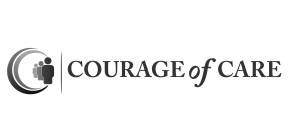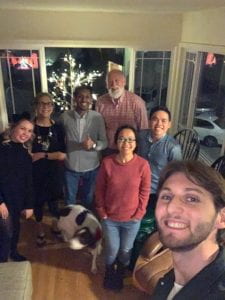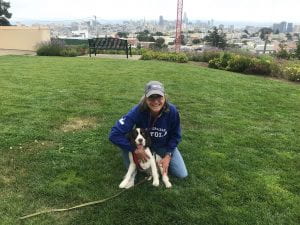An item from The Atlantic explored the reasons behind what is known as “the ambition gap,” wherein women express less interest than men in competing for senior managerial roles. (https://www.theatlantic.com/business/archive/2017/04/ambition-office-women/523443/) The article highlights a recent study undertaken by the Boston Consulting Group (BCG) to support its conclusion that how women are treated affects their career trajectory more than the commonly assumed reason: lack of motivation (https://www.bcg.com/publications/2017/people-organization-leadership-change-dispelling-the-myths-of-the-gender-ambition-gap.aspx).
The researchers at BCG looked at survey data of more than 200,000 respondents from a wide range of companies, industries, age groups, and family statuses, with employees in nearly 200 countries. In their data, they found that women’s desire to reach the top ranks at work primarily varies by company, rather than by family status, as often presumed. In other words, it isn’t entirely choosing family over work that is limiting women’s choices to advance. Rather, researchers found that existing gender diversity had a big impact on how workers felt about pursuing more senior roles.
In work environments where both men and women felt that the company was making progress toward gender diversity within its top ranks, all genders were more likely to aspire to a leadership position. But where the corporate culture was stagnant, regressive, or hostile towards gender equity, women’s choice to avoid advancement opportunities were viewed as a “rational response” to reading the circumstances and making adjustments, trade-offs, and choices, that would allow them to seek meaning and achievement in other areas of their lives that provided a more realistic chance at success.
Among the advice offered by leaders at BCG is recognizing how “the little things add up.” The attitude of managers, the career advice people receive, and the comments they hear can all imply messages about the fairness of a workplace that in turn will motivate women. The main takeaway, therefore, is not to assume that women aren’t competitive or don’t want senior roles. Instead, companies should focus on creating an environment that feels fair and equitable and encourages women to thrive.
When a work culture doesn’t support thriving, however, another result may be the inability to find not just external success but the internal meaning in one’s work. Stifled opportunities can limit the meaning one can derive from work and can interfere with finding meaning in other aspects of life. Emily Esfahani Smith, the author of The Power of Meaning: Crafting a Life That Matters describes in an interview on PBS how in recent years, psychologists have started looking more closely at how the single-minded pursuit of happiness or success affects us (http://www.pbs.org/newshour/bb/living-meaningful-life-simple-storytelling/). They have come to what seems like a counterintuitive conclusion, she reports:
“Chasing happiness and obsessing over it, the way our culture encourages us to do, can actually make people unhappy and lonely.”
But it’s different when we set another goal for ourselves when we search for and pursue meaning in life. These same questions lie at the center of much great art, literature, and philosophy that we liberally apply in our management education at the University of San Francisco, as my recent blog posts have described. What characterizes this meaningful life is a sense of connection—of contributing to something beyond yourself. That could be your family, your work, play, nature, or God. When people say their lives are meaningful, Smith remarks, “It’s because three conditions have been satisfied: They believe their lives matter, they have a sense of purpose that drives them forward, and they think their lives are coherent and make sense.”
Smith suggests that a good way to begin identifying these criteria for meaning is by exercising “the simple act of storytelling.” Telling your story (and listening to another’s) gives meaning, or can at least clear the path to it. Smith even suggests that “the rise of rap and hip-hop and the popularity of the radio series StoryCorps,” forms that make a narrative out of the events in people’s lives offers a framework that goes beyond the day-to-day that helps people make sense of themselves and their lives.
These observations about meaning in the workplace and how they are tied to the potential of women to tell their stories all come together in a recent Ethical Will composed by one of my MBA students, Mary Pham. Composing an Ethical Will is required of all students, although the form each story takes is up to the individual student. Many take Frank Lloyd Wright’s principle that “form and function are one,” and find a way to tell the story of the moral meaning of their lives through a metaphor that has personal value for them but universal value for all. In the first example of an Ethical Will, cited in the previous blog post, I chose to feature a student who compared his life lessons to basketball. I am ashamed to say that it never occurred to me that a female student would also choose a sports analogy, but Mary Pham did, taking her quest for meaning and equity just a step further.
She writes: “I first picked up a club at the age of 7 and I can say that the game of golf has taught me valuable life lessons.” Included in those lessons are:
Etiquette: For example, showing respect by remaining quiet during someone’s swing.
Integrity: Playing the ball where it lies (not moving it from behind the tree to the fairway) and counting every single stroke on your scorecard.
Patience & Perseverance: Staying in the game for the entire 4 ½ hour round, knowing that it takes countless sessions at the driving range to work on your swing.
Mary then takes us through the different types of shots she employs during a round of golf. She shares what goes through her mind and how it relates to her personal values and the lessons she’s learned:
First Tee
Walking up to hole #1 and preparing for your first tee shot can be nerve-racking. Everybody’s watching you. You don’t want to be THAT guy who tops the ball or hits it up high into the air landing 30 yards in front of you, but everybody goes through that at some point. I’m always nervous and excited at the same time when it comes to the 1st tee. It’s very similar to that first day of school: you want to set a good impression and start off on the right foot.
Takeaway: As much as I want to look good by sending that ball straight and down the fairway, the real challenge is setting a PR or a personal record for myself. At the end of the day, I am really only competing against myself. This can apply to different areas of my life. The lesson I constantly remind myself is to “not compare myself to others.” I understand the importance of directing my focus inwardly and needing to care more about my personal wants and needs. It can be challenging for me to not become distracted by the successes of others. The whole point is to stay focused on what you want to achieve and not what others expect out of you.
Fairway
After a tee shot, the best spot I can land on – is the fairway. It’s THE best lie and the shot that everybody wants because then you’re in a great position for your next shot.
Takeaway: So you’re feeling great and confident after that awesome shot. Someone from your group may have given you a high five and you noticed that he or she is right there with you and you acknowledge them too with a “Good ball” or “Terrific Shot, Bob!” It’s the spirit of camaraderie and cheering each other on that makes this game or even life a little bit more special. Whether it’s acknowledging your self worth or recognizing the small deeds of others – there’s something about finding joy in the little things because they always count in a bigger way than you expect.
Rough
When you’re not on the fairway, you can end up in what they call the “rough” and they call it that for a reason! The grass is thicker and you’re at a not-so-great angle to the green, where the flag is.
Takeaway: Arriving in the “rough” has changed over my 20 years playing golf. While golfing with my dad growing up, he taught me a lot about how to carry myself in both the good and bad situations. When I hit a really good shot I’d celebrate hard and he’d remind me to be cool and obviously humble because nobody likes a bragger! And when I hit a bad shot, I would become angry and beat myself up for it every time and then my dad would have all sorts of sayings to say to me like “just focus on your next shot” “that’s ok, you’ll be fine” or “let it go and move on.” Over the years, after numerous amounts of shots from the rough, I’d like to say I matured and developed a more positive mindset towards life’s challenges. Sometimes being optimistic is the only way for me to calm down and think through a difficult situation. We each have our own ways of dealing with problems and stress, but finding an ounce of positivity somewhere can make things seem not as bad.
Decision Shot
If you’re not on the fairway or in the rough, sometimes you’re faced with a “decision shot.” Imagine a small creek in between you and the green. If you land in the creek, you get a 1-stroke penalty added onto your score AND you lose a golf ball. So there are two options: you play it safe and aim right before water OR you go for the green with the risk of ending up in the water.
Takeaway: I’ve played the safe shots most of my life, until recently. My immigrant parents worked hard to set up me and my brother for success. They were raised to work to provide for their family as opposed to staying at a job that they fulfilled them and provided meaning. They tried to instill in me the same attitude about work, insisting I pursue a career like accounting that was safe and lucrative. But the lack of meaning led me to finally take the risk to prepare for and attend graduate business school. And here I am trying to pave a new way for myself on my own terms.
Bunker
Moving onto the “short game” when you land around the green and you’re so close, it’s time to pull out a wedge club and “chip” it onto the green.
Takeaway: At this point, I’m scrambling and trying to make the most out of a situation. I’m hanging on, motivated to finish with a birdie, par or whatever it may be as I balance family, work, and school. Whether it’s coming in early or staying late to meet an unexpected deadline or needing to sacrifice happy hour to spend time fine-tuning that presentation for the next day, the dedication and extra effort I show will get me out of the bunker.
Putt
Lastly, it’s time to putt. To me, this type of shot is the most difficult. It takes patience, focus, and lots of practice to finish. The undulation of the green requires you to adjust two main things – speed and alignment. If you’re uphill, you’ll need to hit the ball a little bit harder and if you’re downhill, you’ll do the opposite. Now if the placement of the hole is on a slope, you’ll need to aim to the far right or far left of the hole to take the slope into consideration. It can be complicated.
Takeaway: You know when you watch a PGA tour, the crowd goes silent, the players are under high pressure and then the winner sinks the putt in to celebrate. That moment is so emotional because all that hard work ends with that celebratory putt. Although it’s common to think of golf as a solitary sport, that moment of victory isn’t as sweet without your fans – your family, significant other, and friends who have been there with you every step of the way. Never forget your Fan Club and take the time to thank them for all they helped you to achieve.






